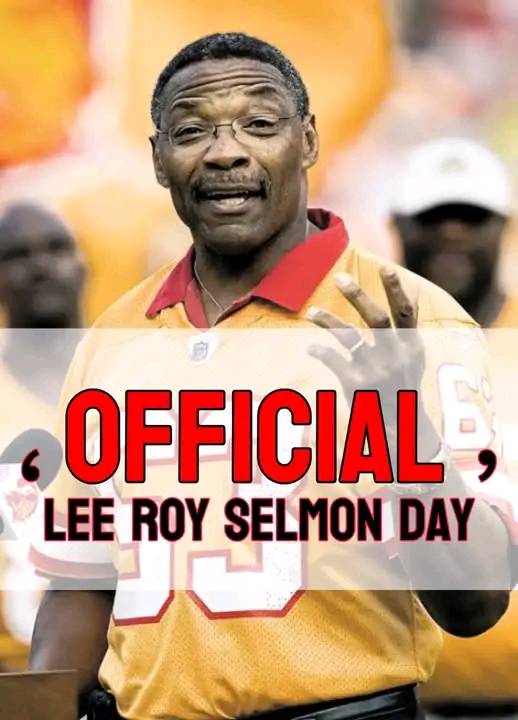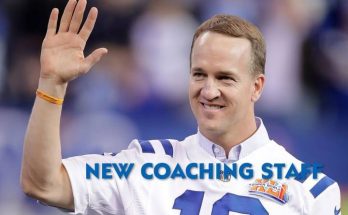In a heartwarming and overdue celebration of excellence, character, and impact, both the University of Oklahoma and the NFL’s Tampa Bay Buccaneers have come together to declare an annual “Lee Roy Selmon Day.” The tribute, to be held every September 22nd—commemorating the date of Selmon’s jersey retirement at Oklahoma—will honor the legendary defensive end’s monumental contributions to the sport of football and to the communities he served throughout his remarkable life.
It is not just a celebration of a football player; it is a celebration of a man whose legacy transcended the game. Lee Roy Selmon, revered by fans, coaches, and teammates alike, embodied integrity, perseverance, and humility in every facet of his life. From dominating the line of scrimmage in Norman to helping build an NFL franchise from the ground up in Tampa, Selmon’s story is one of greatness achieved the right way.
The Early Years: Humble Beginnings, Towering Potential
Born on October 20, 1954, in Eufaula, Oklahoma, Lee Roy Selmon was the youngest of nine children in a deeply faith-rooted family. Raised in a modest home, he quickly developed a work ethic and sense of responsibility that would later define his life both on and off the field. Encouraged by his older brothers Lucious and Dewey—who also played football at Oklahoma—Selmon joined them at the University of Oklahoma, where head coach Barry Switzer was assembling one of the most dominant defenses in college football history.
Lee Roy Selmon didn’t just fit in—he stood out.
Dominance at Oklahoma: A Sooner Legend Is Born
Selmon’s college career is the stuff of legend. A two-time All-American (1974, 1975), he led the Sooners to back-to-back national championships in 1974 and 1975. In his senior season, he became the first Sooner to win the prestigious Lombardi Award and also captured the Outland Trophy as the nation’s top interior lineman.
With Selmon anchoring the defensive line, the Sooners were unstoppable. His combination of speed, strength, and intelligence made him virtually unblockable. But it wasn’t just his on-field brilliance that made him a favorite in Norman—it was his humility, sportsmanship, and leadership.
By the end of his college career, Selmon had racked up 335 tackles and was widely considered the greatest defensive player in Oklahoma history. Even decades later, Sooner fans and football historians still rank him among the all-time greats, not just at Oklahoma but in college football overall.
Making NFL History: The First Buccaneer
In 1976, the Tampa Bay Buccaneers made Selmon the first-ever draft pick in franchise history, selecting him No. 1 overall. It was a bold and wise choice. The expansion Buccaneers were in desperate need of leadership, and they found it in Selmon, who brought instant credibility and excellence to a struggling franchise.
Despite the team’s early struggles—Tampa Bay lost its first 26 games—Selmon never complained. Instead, he led by example, quietly becoming one of the most respected players in the league. By 1979, his relentless play helped lead the Bucs to their first-ever playoff appearance and an NFC Championship Game berth.
Selmon played nine seasons with the Buccaneers, earning six Pro Bowl selections and being named NFL Defensive Player of the Year in 1979. He retired in 1984 as the franchise’s all-time sacks leader (23 officially recorded, though he had 78.5 unofficially due to stat-keeping inconsistencies before 1982).
His No. 63 jersey was the first to be retired by the team, and in 1995, Selmon received the ultimate honor—enshrinement into the Pro Football Hall of Fame, the first and only Buccaneer to date to be inducted solely for his NFL accomplishments in Tampa.
Life After Football: The Ultimate Community Champion
While his football résumé was enough to warrant universal admiration, it was what Selmon did after retirement that perhaps best exemplified his greatness. Remaining in Tampa, Selmon became a civic leader, philanthropist, and champion of education and youth development.
He helped establish the University of South Florida (USF) football program, serving as its first athletic director and helping bring Division I-A football to the school. His vision and leadership ensured that USF football would grow into a respected program nationally.
In the business world, Selmon found success too. He opened a chain of restaurants—Lee Roy Selmon’s—that became known not just for their food, but for their community involvement. He supported numerous charities and youth outreach programs, and was always available for a handshake, a smile, or an encouraging word.
Above all, Selmon’s life was a testament to humility. Despite his accolades, he remained grounded, always crediting others and deflecting praise. He was known for his deep Christian faith, quiet demeanor, and steadfast commitment to service.
A Unified Tribute: “Lee Roy Selmon Day”
With the declaration of “Lee Roy Selmon Day,” the Oklahoma Sooners and Tampa Bay Buccaneers are giving fans, communities, and the broader football world an annual moment to reflect on the legacy of one of the game’s true giants.
Both organizations have planned coordinated events around the holiday.
In Norman:
- The University of Oklahoma will host a commemorative ceremony at Gaylord Family – Oklahoma Memorial Stadium, where Selmon’s jersey and accolades will be displayed prominently.
- A scholarship fund in Selmon’s name will be expanded to support underserved student-athletes and academic achievers alike.
- Oklahoma will wear special “Selmon Strong” patches during one home football game each season around the commemorative date.
In Tampa:
- The Buccaneers will honor Selmon during a designated home game every season, with players donning commemorative decals and warm-up shirts.
- The team’s community service week will be renamed “Selmon Service Week,” encouraging players, coaches, and staff to volunteer across Tampa Bay in his honor.
- USF, the university Selmon helped elevate, will join in by organizing campus-wide service projects and youth football camps.
NFL and NCAA Acknowledgment:
Commissioner Roger Goodell and NCAA President Charlie Baker both issued statements recognizing Selmon’s legacy and supporting the annual day of remembrance. Discussions are also underway to include Selmon in national Black History Month campaigns as a trailblazing African American figure in both sports and community development.
Reactions from Family and Teammates
The announcement of “Lee Roy Selmon Day” brought forth a flood of emotional reactions from those who knew him best.
“It’s the perfect way to honor Lee Roy,” said Barry Switzer, his legendary coach at Oklahoma. “He was the best I ever coached, and not just because of his play—because of the kind of man he was.”
Derrick Brooks, another Tampa Bay great and Hall of Famer who followed Selmon’s path of on-field brilliance and off-field leadership, shared: “Lee Roy was my role model. I’m here because of the standard he set. This day is not just for us—it’s for everyone who believes character matters.”
His wife Claybra and their children were present at the dual announcement ceremonies. Fighting back tears, Claybra said, “Lee Roy never sought recognition. He simply wanted to do the right thing. I’m so proud of how his life continues to touch others.”
A Legacy Carved in Granite
Lee Roy Selmon passed away far too soon in 2011 at the age of 56, following a stroke. But his spirit remains alive—in locker rooms, in classrooms, and in communities. The annual celebration ensures that future generations will learn about more than just a football player; they’ll learn about a role model, a builder, and a beacon of quiet excellence.
He is the rare figure whose name invokes not just admiration, but inspiration.
Whether you’re a young lineman studying film, a college student chasing a dream, or a community volunteer working for change—Lee Roy Selmon’s story serves as a guiding light.



